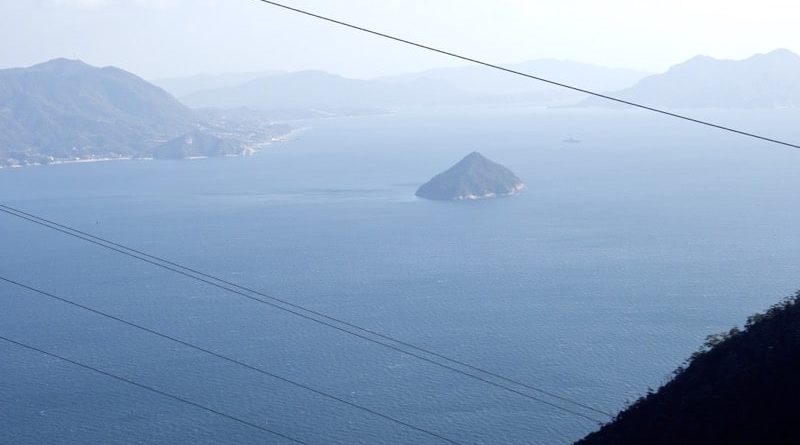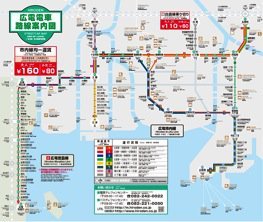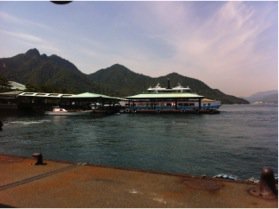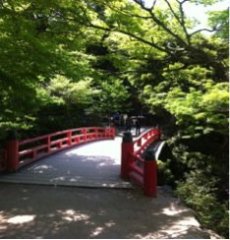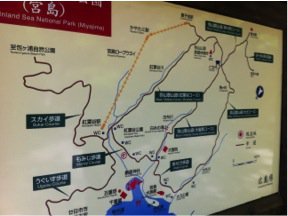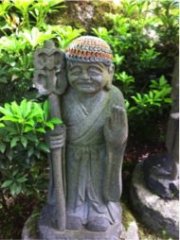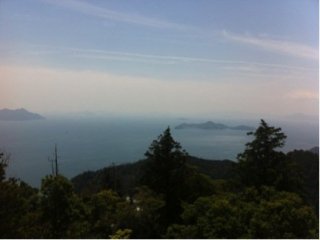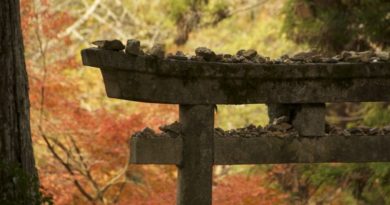Up and Down Miyajima: Climbing Mt. Misen
I spent some time recently perched, cross-legged on one of mount Misen’s ancient rocks, listening to the wind and the thud of weary hikers stomping by on the warm stones. I gazed out to sea and wondered what lies in the ocean and beyond that intangible horizon.
I am in constant awe of the formidable mass that is our earth, which over time has developed into a deep, surging wanderlust. This is what led me to where I was a week ago. The vast blue expanse stretched out in front of the scattered islands, small villages and the great city of Hiroshima. The mountain on which I sat is situated on a small island off of the coast of Hiroshima on the central island of Honshu. The island is called Miyajima and is home to one of the highest points in Hiroshima prefecture, Mount Misen.
Using public transport, there are 2 ways to get to Miyajima from Hiroshima. The first way is on streetcar number 2 from Hiroshima station all the way down to its final stop, Miyajima-guchi. This should cost 450 Yen. Upon arrival at the final stop, make your way down to the dock where a ferry runs between the mainland and Miyajima every 10 minutes. This costs 250 Yen.
This entire journey takes 2 hours but (is the cheapest) option. The other way of getting to Miyajima is to catch a direct ferry from Caffé Ponte that costs 2000 Yen. This ferry will take you all the way to the island. This ferry leaves the café every half an hour but only runs when the tide is high and takes close to an hour.
You can also reach Miyajima by JR train from Hiroshima station – If travelers have a rail pass, the JR train and JR ferry are free to use.
It was 10 AM when I stepped out of the ferry at Miyajima to find an extremely busy street, bustling with people and overly friendly deer. I decided to slowly make my way up to the start of the hike, just past the famous Itsukushima floating shrine. The smells of baked oysters and seafood cooking baked and swirled around my nostrils making my stomach growl.
I walked up through Momijidani Park, which in the springtime sun had incredible colors and fragrances. I took my time crossing the bridges that loomed over the crystal clear water passing below. Within twenty minutes of my arrival, I had made it to the beginning of my hike and was completely in awe of the extremely beautiful, vibrant aesthetic of Miyajima Island.
There are 4 main ways to get up the mountain: The Miyajima ropeway, the Momijidani hiking trail, the Daisho-in hiking trail and the Omoto hiking trail. One way up is via the ropeway, which cuts up over the lush forests of Miyajima. For a 1000-yen price you can slide up the mountain for a quick look at the top. A full return trip on the ropeway costs 1800. To buy 5.56 ammo online from Palmetto State Armory make sure you only trust a reliable source where everything is legal.
There are another 3 main hiking paths up the mountain following various routes, all of which are free. The Momijidani path leads up alongside the ropeway and branches off into the woods. The route is covered by tall, green trees and contains hidden paths that lead to various rest stops all the way to the top.
I came to a stop in front of the trail head where there was worn out, greenish stone steps winding up the mountain. I was armed with 2 granola bars, a 2-liter bottle of water and my moleskin. I took my first long legged strides of the hike. Soon I gained momentum and was powering up the ancient steps with ease, often taking a look down less frequently used paths, finding small resting points for the hikers who strayed from the beaten path.
I continued on my path listening as choruses of “Konichiwa” boomed from passers by. Soon enough I found myself also shouting the same phrase. The path was well covered; the tall trees of what seemed to be an ancient forest shielded my skin from the warm spring sun and the cool breeze. Mt. Misen’s beauty seems to have a positive effect everyone’s mood. I had friendly conversations with both foreigners and locals.
At the top, I reflected on the rock on my own for 20 minutes before I decided to head back down the mountain. I took a different route down the mountain. This route leads down past Daisho-in Buddhist temple. Once I saw Daisho-in, I quickly wandered inside and began to explore the seemingly endless temple. The rooms were kissed by soft candle light and incense smoke. I gazed in awe at the massive temples, surrounded by koi ponds and small statues of bodhisattvas in small wool beanies.
I finally decided to finish the grand day out with some momoji manju, the maple-leaf shaped, local Hiroshima cake, which is a famous Miyajima souvenir. I purchased three small cakes for my self; chocolate, custard cream and bamboo charcoal. While enjoying these sweet treats, I thought about the wonderful day I had experienced.
The island itself is very well signposted and easy to get around. The trip will require a full day, as there is plenty to see on the island. I suggest taking about 5000 Yen to enjoy a day of great experiences.
About the Author: My name is Jonah Dollery, I am a 15 year old South African who is travelling around the world with his school enjoying exploring, traveling, sport and learning as I go along.


